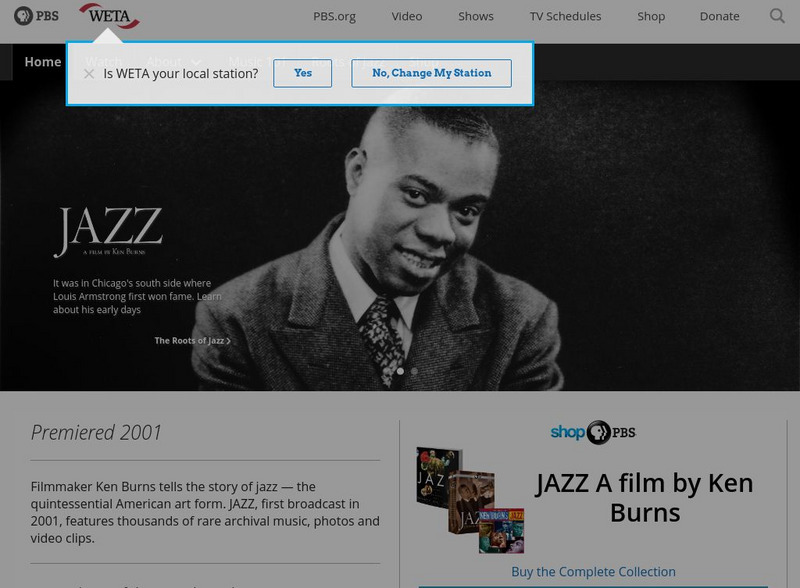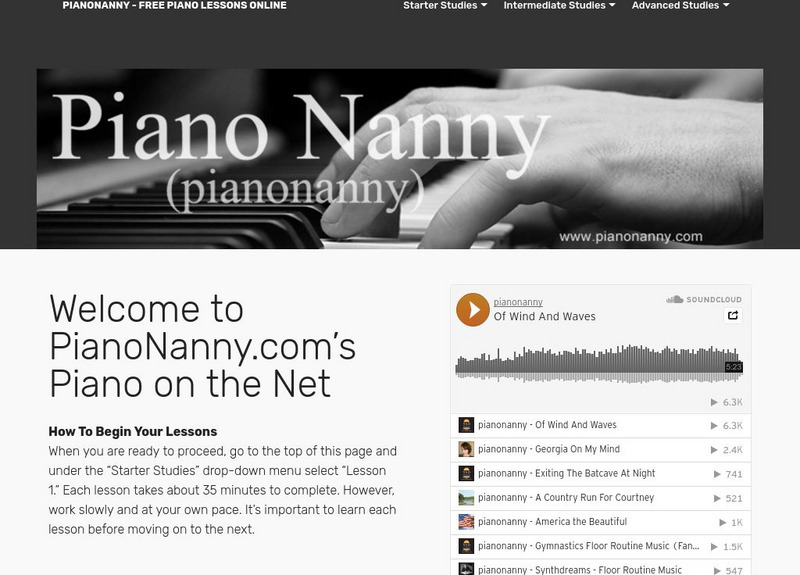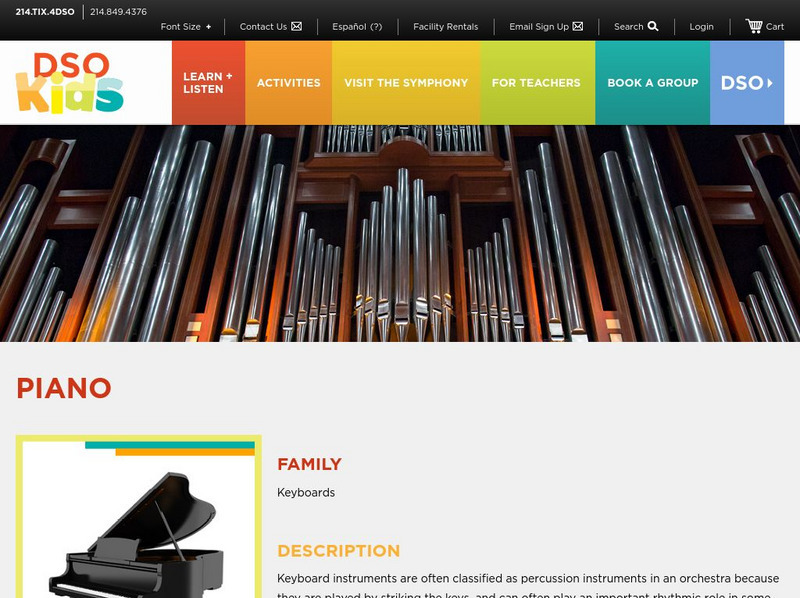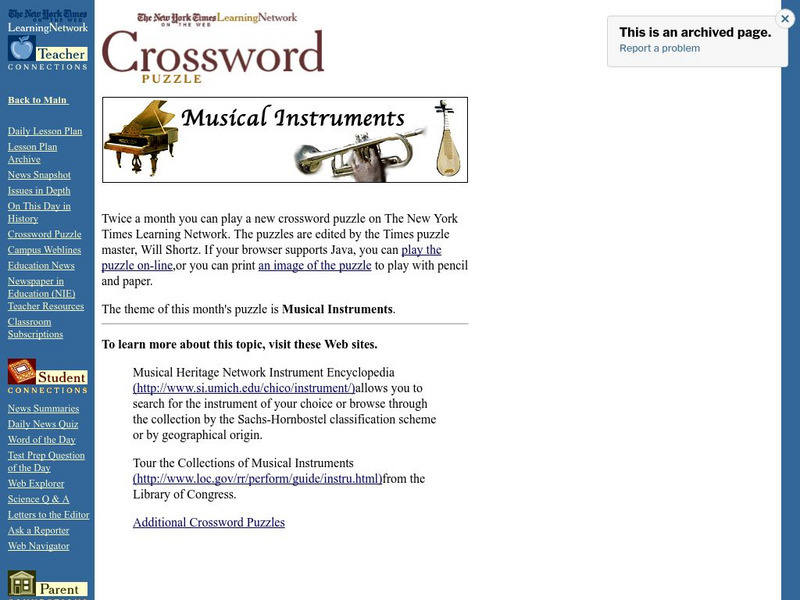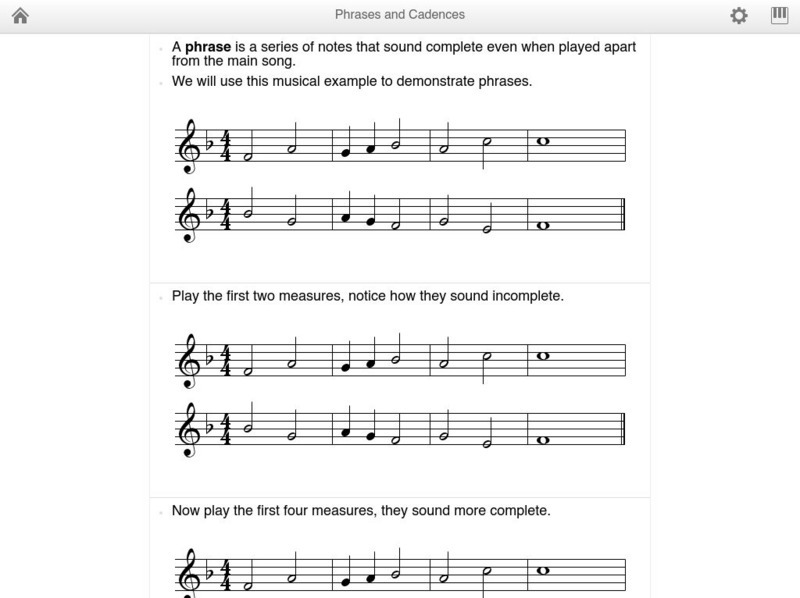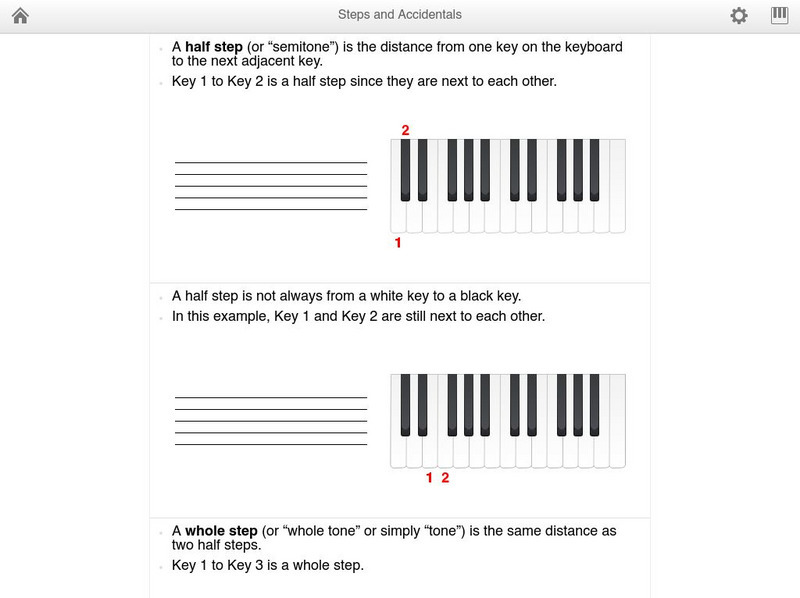Music Theory
Music theory.net: Keyboard Trainer
A fantastic resource for music teachers and students learning to play the piano. This online quiz can be customized to test students on specific keys. Students can click "Toggle helpers," to check answers along the way.
PBS
Pbs: Jazz and Math: The Fibonacci Keyboard
Teach a lesson about the piano keyboard using the Fibonacci Sequence. Explore with your students the various relationships the Fibonacci Sequence has with music.
University of Michigan
U.michigan: Keyboard Temperament Analyzer
Features a downloadable spreadsheet for analyzing keyboard temperaments. Requires a bit of physics knowledge.
Yale University
Yale Collection of Musical Instruments: Keyboard Instruments
Learn about keyboard instruments from the collection of Yale University in this image gallery with descriptions of each piece, including pianos, harpsichords, and organs.
Other
Piano Music Sight Reading Practice
Actually this clever site drills pianists on note names and note placement on the keyboard. Kids can access this site at home for practice. Both treble and bass clef are used.
Other
Piano Nanny: Piano on the Net
This site provides extensive piano lessons, utilizing helpful guides complete with audio. Detailed information on the computer configuration needed for this site is given, as well as a 12 note keyboard.
Dallas Symphony Orchestra
Dallas Symphony Orchestra Kids: Piano
Read about keyboard instruments and the piano in particular. Use RealAudio or Windows Media Player to hear the piano alone and with the orchestra.
Fun Brain
Fun Brain: Piano Player
Interactive game where musical notes are shown on a scale and you have to choose the piano key that matches the note. Choose from four levels of play, from beginner to virtuoso.
Other
What Are Historical Keyboard Instruments
Provides information about historical keyboard instruments such as the clavichord, harpsichord, fortepiano and organ.
Ducksters
Ducksters: Music for Kids: Piano Playing Basics
Kids learn the basics of playing the piano on this site. Find information about the keyboard, middle C, position, and practice.
Other
Tb on Web: Alternate Temperaments Theory and Philosophy
Explanation of various keyboard tunings, and why modern Western music uses "equal temperament."
Canada Science and Technology Museum
Canada Science and Technology Museum: Electronic Music
Look into the collection of electronic and electrical musical instruments from the Canada Science and Technology Museum's collection, some artifacts dating as far back as the late 1800s. The collection is divided into two main groupings:...
Dallas Symphony Orchestra
Dallas Symphony Orchestra Kids: Harpsichord
The harpsichord looks a little like a piano, but there are enough differences to place them in two different instrument groups even though both use keyboards. Use RealAudio or Windows Media Player to hear the harpsichord.
Science Buddies
Science Buddies: Comparing Vocal Ranges: How High and Low Can You Go?
What is the highest note you can sing? How about the lowest? Do you think males and females can reach the same notes? How about children and adults? Find out the answers to all these questions in this "note"-worthy science fair project.
PBS
Classics for Kids: Musical Instruments
An A-to-Z directory of all the instruments and tools of the orchestra. Each entry includes a description, a picture, and a sound sample.
Dallas Symphony Orchestra
Dallas Symphony Orchestra Kids: Organ
A concert hall organ can have as many as four keyboards, 244 keys, 32 pedals and 4,535 pipes. Use RealAudio or Windows Media Player to hear the organ alone or with the orchestra.
New York Times
New York Times: Crossword Puzzle: Musical Instruments
An interactive and printable crossword puzzle developed by the New York Times Learning Network. The theme of this puzzle is Musical Instruments.
Music Theory
Music theory.net: Interval Trainer
This online quiz is a fantastic tool to check your knowledge of intervals. Keeps score, and can be customized to fit specific lessons (augmented intervals, diminished intervals, double accidentals.)
Music Theory
Music theory.net: Phrases and Cadences
An explanation of phrases and cadences with illustrated examples. Also provides audio clips, and a printable chart at the end of the lesson. By MusicTheory.net.
Music Theory
Music theory.net: Steps and Accidentals
Provides an explanation of half steps, whole steps, flats, and sharps. Illustrated examples accompany these definitions.
Music Theory
Music theory.net: Introduction to Chords
A thorough description of chords, roots, and triads. Provides illustrated examples as well as audio clips to supplement this lesson.(You may need to download Flash Player to view this site.)
Music Theory
Music theory.com: Introduction to Chords
A description of augmented and diminished triads/ chords. Provides illustrated examples with highlighted vocabulary words,a printable chart, and audio clips to supplement the lesson.
Music Theory
Music theory.net: Generic Intervals
A thorough description of generic intervals with a printable chart at the end of the lesson. MusicTheory.net provides illustrated examples, and highlighted vocabulary terms. (You may need to download Flash Player to view this site.)
Music Theory
Music theory.net: Diatonic Triads
Descriptions of diatonic triads: major, natural minor, and harmonic minor. Provides animated illustrations, and a printable chart at the end of the lesson.

